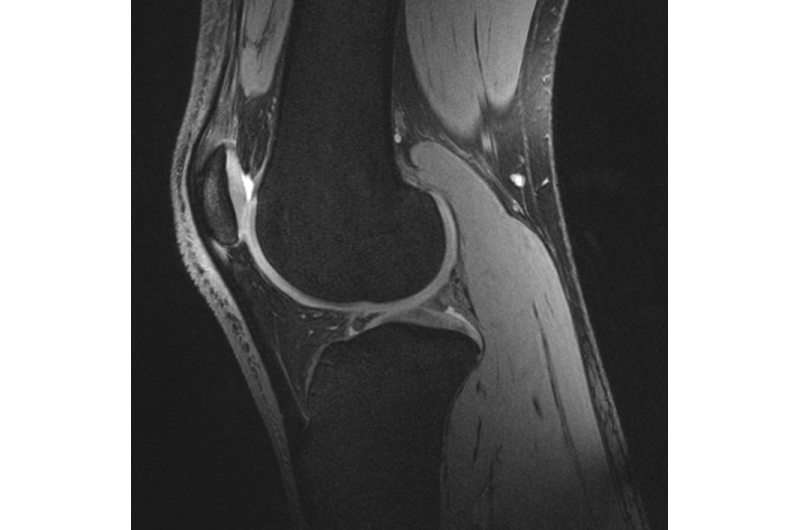Image: Studying astronauts' knees to rehabilitate bedridden, Earth-bound patients

This MRI scan shows a knee joint with cartilage covering the articulating joint surfaces to help the bones slide smoothly.
Cartilage responds slowly to changes in joint loading because it does not have any blood vessels, lymphatic system or nerves to feed and grow tissue, so nutrients are absorbed slowly.
Everyday loading of our skeleton is important to keep cartilage healthy because the motion and loading of the joint are needed to get nutrients into the cartilage, but little is known about cartilage in bedridden people on Earth.
To find out more, the Institute of Biomechanics and Orthopaedics of the German Sport University Cologne in Germany is studying astronauts.
As astronauts float in space for up to six months their legs are hardly used in weightlessness. The researchers are analysing biomarkers in up to 10 astronauts before and after flight to chart cartilage metabolism, thickness, volume and water content in knee joints.
This is the first time such a study is being done on healthy people. As cartilage responds so slowly, a similar study with healthy individuals on Earth would require that they do not move for many months, which is impossible.
The goal is to learn more about how the knee cartilage of the astronauts suffers from their trip into space. From here, researchers are hoping to understand the role of mechanical loading for cartilage health and the development of osteoarthritis.
Provided by European Space Agency



















